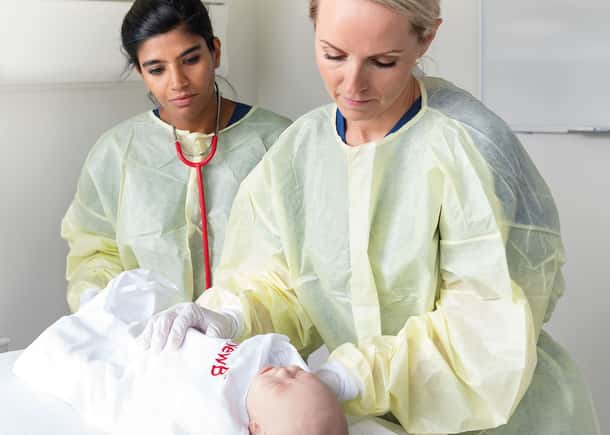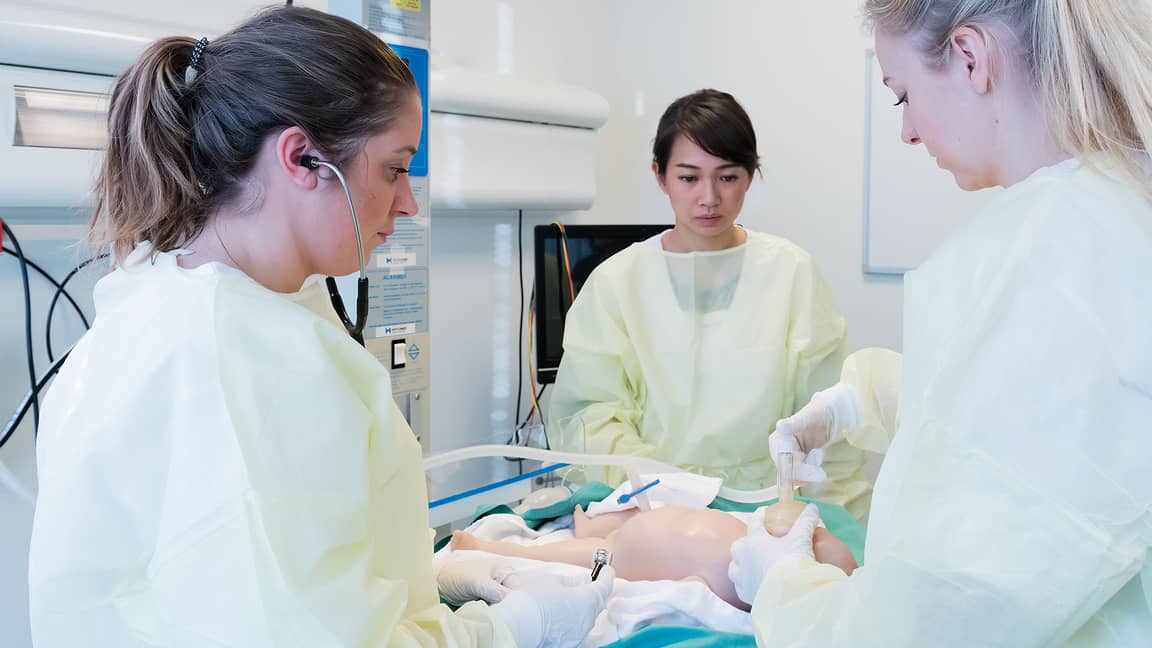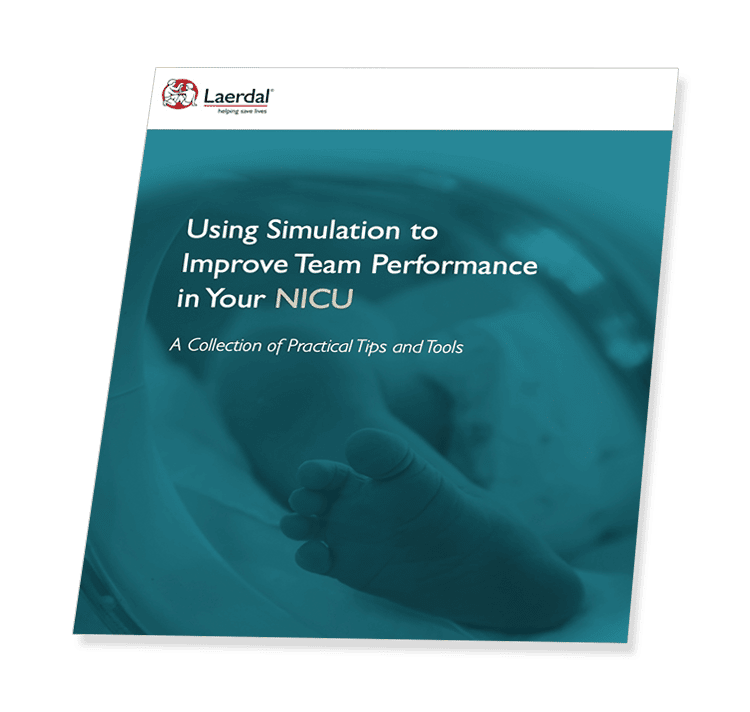3 Things You May Be Missing in Your NRP Training
All NRP courses include the same curriculum components, but that doesn’t mean they are all equal.

All NRP courses include the same curriculum components, but that doesn’t mean they are all equal.

Most hospitals require that any healthcare provider who interacts with a mother and child should maintain the American Academy of Pediatrics (AAP) Neonatal Resuscitation Program® (NRP®) provider status. This includes all members of an obstetrical multidisciplinary care team, ranging from doctors, nurses, midwives, respiratory therapists, and other staff from Labor and Delivery, Postpartum, and Neonatal Intensive Care Units.
Not only is this a requirement, but the training is shown to improve newborn survival outcomes.1 And, though most newborns will not require extensive intervention, those who do will need providers who are competent and confident treating a low-frequency, high-acuity resuscitation event.
All NRP courses include the same curriculum components, but that doesn’t necessarily mean they are all equal. In the instructor-led (or hands-on) portion of the course, there are three areas that students can feel are lacking – and these are key areas worth putting your focus on.

In addition to knowing the neonatal resuscitation algorithm and passing the exam, learners should feel confident that they can treat high-risk neonates. This includes being able to identify at-risk deliveries before a situation arises as well as being keenly aware of the patient environment.
An instructor-led event held in situ, or in the real clinical environment, can ensure that learners remain vigilant in inspecting the room and managing the patient. Concerns that can be addressed with in situ simulation training include:
Using in situ simulation to enhance a learner's hands-on training can help shape stronger connections between a provider and the NRP course material.
When a healthcare professional renews their NRP status at an off-site location, the information is incredibly useful but also generalized. Learners don’t receive information about hospital-specific protocols, which are necessary in order to perform optimally within their own organization.4
Special attention won't be given to how a learner's discipline might equate to adopting a specific role or responsibility in a real neonatal emergency. And, because of this, often learners are required to attend a separate training with their respective unit to discuss internal policies and procedures.
Though not all organizations have the resources to provide their own in-house NRP training courses, it’s worth considering how beneficial it can be to providers and their patients. The ability to refresh NRP skills and guidelines alongside any additional expectations by an employer can streamline the learning process and shape safe patient care practices.
For the instructor-led portion of the NRP course, the use of simulation drives home the clinical concepts and skills that providers need to save a newborn life. However, research shows that these skills begin to deteriorate shortly after the training.5
Continued practice using simulation can ensure that healthcare providers maintain their strong NRP skills over time and, certainly, in between recertifications. Suggestions to keep the learning interesting include:
By providing regular and diverse simulation training experiences, you can ensure that learners remain confident in their ability to address any neonatal patient emergency.
[E-Book] A Collection of Practical Tips and Tools
Learn how you can use simulation to achieve high-reliability status with your NICU team.

Sign up for Laerdal Medical email updates. You can identify your interests and receive new educational content, updates, event information and more.